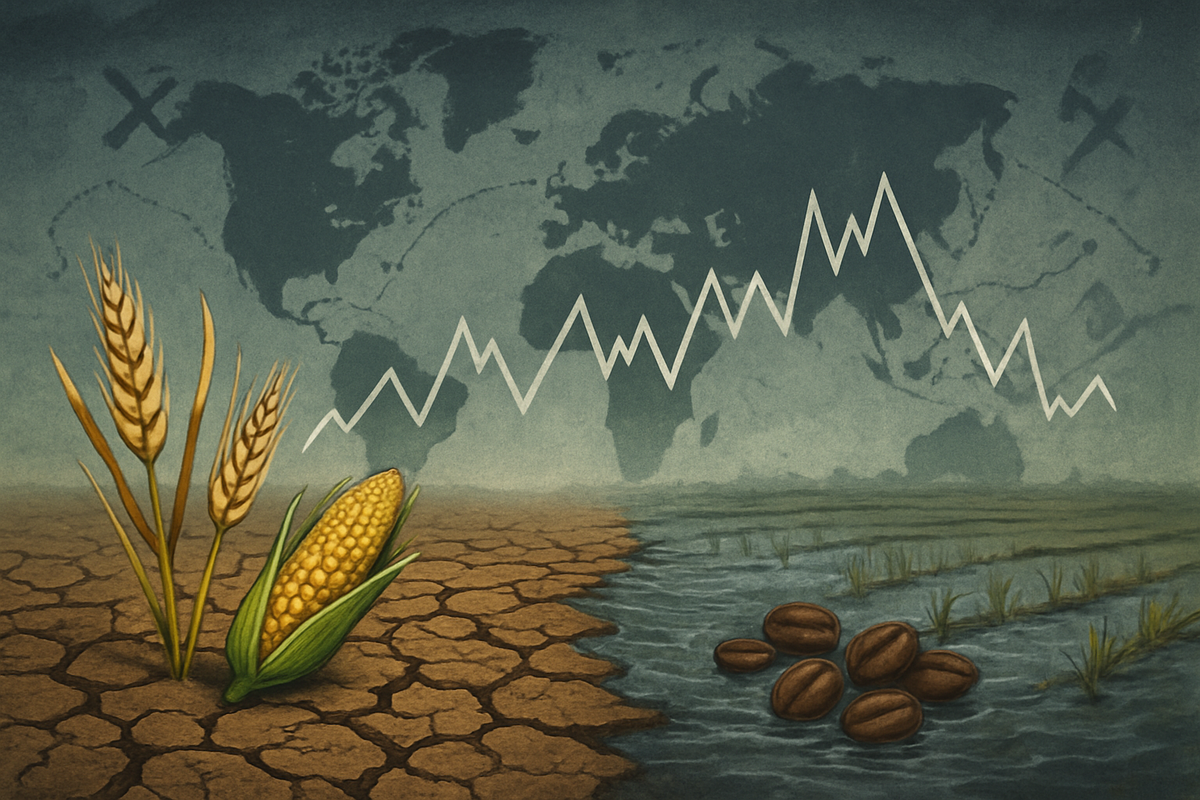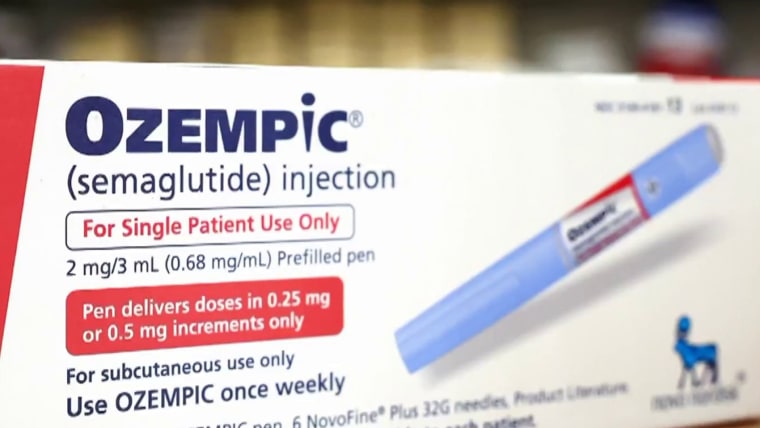Q&A: The role of soil health in food security and tackling climate change – Eco-Business

Global Soil Degradation: A Threat to Sustainable Development Goals
Current Status and Regional Disparities
A global assessment by the Food and Agriculture Organization (FAO) indicates significant human-induced land degradation. The most severely affected agricultural lands are concentrated in the southern United States, eastern Brazil and Argentina, the Middle East, northern India, and China. This widespread degradation is a direct impediment to achieving Sustainable Development Goal (SDG) 15, particularly Target 15.3, which aims to combat desertification and restore degraded land and soil.
The historical context for this degradation is linked to the Green Revolution of the 1940s, which promoted monocultures and the use of synthetic fertilisers and pesticides. While this led to increased yields, it disrupted soil microbiology, replacing essential organic matter and undermining the long-term health of agricultural ecosystems.
Data Deficiencies and Monitoring Challenges
A significant challenge in addressing soil degradation is the lack of comprehensive data, particularly in developing nations. This data gap hinders progress towards the SDGs by obscuring the scale of the problem.
- Sub-Saharan Africa: Few studies exist to measure the rate and extent of soil degradation due to insufficient reliable data.
- Latin America: Data on soil carbon dynamics are scarce.
- Global South: According to Dr. Helena Cotler Ávalos, no country in the global south has comprehensive data on soil contamination from agrochemicals, compaction from machinery, or fertility loss.
In contrast, developed regions have more robust monitoring systems. A 2024 EU report estimated that 61% of its agricultural soils are degraded. Similarly, a report found 40% of UK agricultural soils are degraded due to intensive farming. This disparity highlights a critical need for international cooperation and capacity-building, in line with SDG 17 (Partnerships for the Goals), to ensure that what is not studied does not remain unaddressed.
Impact on Key Sustainable Development Goals
SDG 2: Zero Hunger – Food Security and Nutrition
Soil health is fundamental to achieving SDG 2 (Zero Hunger), as approximately 95% of global food is produced on soil. With the global population projected to exceed 9 billion by 2037, the pressure on food production systems is immense.
- Reduced Productivity: Studies estimate that soil degradation has already reduced food production by 13% to 23%. Projections suggest land degradation could cut global food production by a further 12% in the next 25 years, increasing food prices by 30%.
- Nutritional Deficiencies: Degraded soils impact food quality. A 2022 study in India linked nutrient deficiencies in rice paddy soils to malnutrition, where over 15% of children suffer from deficiencies in essential vitamins and minerals. This directly impacts SDG Target 2.2, which aims to end all forms of malnutrition.
- Climate Resilience: Healthy soils improve the resilience of food systems. A study found that healthy soils in the US were associated with higher rainfed corn yields, even under drought conditions.
SDG 13: Climate Action – Soil’s Role in Mitigation
Healthy soils are a critical tool for climate change mitigation, directly supporting SDG 13 (Climate Action). Global agricultural lands store approximately 47 billion tonnes of carbon. According to the Organisation for Economic Co-operation and Development (OECD), agricultural soils could sequester up to 4% of global greenhouse gas emissions annually, contributing significantly to Paris Agreement objectives.
Practices that enhance soil carbon sequestration include:
- Improved cropland and grazing land management.
- Restoration of degraded lands.
- Cultivation of perennial or cover crops to reduce erosion.
However, scientific uncertainty remains regarding the scale and permanence of soil carbon sequestration, with some models potentially overestimating the climate benefits.
Technological and Agricultural Interventions for Soil Health
Carbon Dioxide Removal (CDR) Techniques
CDR techniques can enhance soil carbon and contribute to climate goals, though they present both opportunities and challenges.
- Biochar: A carbon-rich material created from burning organic matter. When added to soil, it can improve fertility, water retention, and microbial activity. However, its high production cost and potential to release other contaminants or greenhouse gases are significant drawbacks.
- Enhanced Rock Weathering: Involves adding crushed silicate rocks to soils, where they react with atmospheric CO2 to store carbon as carbonate minerals. While promising, potential negative effects include alterations to soil nutrient cycling processes.
Regenerative Agriculture Practices
Regenerative agriculture aims to restore soil health and ecological processes, aligning with multiple SDGs by improving food security (SDG 2), promoting sustainable land use (SDG 15), and enhancing farmer livelihoods (SDG 1 and SDG 8).
Key practices include:
- Minimising external inputs like synthetic fertilisers and pesticides.
- Reducing or eliminating tillage to protect soil biodiversity.
- Implementing crop rotation and mixed cropping-livestock systems.
- Applying manure or compost to increase organic matter.
Studies show these practices can increase soil microbial biomass, soil carbon, and farm profitability. For example, a 2018 study found that US farmers using regenerative methods for maize had 78% higher profits. However, other research indicates a potential trade-off, where practices that maximise carbon mitigation might lead to reduced crop yields.
International Policy Frameworks and SDG Alignment
Role of UN Conventions
Soil health is increasingly recognized within international policy, directly supporting the achievement of the Sustainable Development Goals. Soil regeneration is featured in four SDG targets, most notably Target 15.3, which calls for a “land-degradation neutral world.”
Key international frameworks addressing soil health include:
- UNFCCC (Climate Change): The Sharm el-Sheikh joint work plan and the Emirates Declaration from COP28 commit signatory nations to integrate agriculture and food systems into their climate plans and enhance soil health.
- UNCCD (Desertification): This convention has a direct mandate for countries to address soil health and land restoration. Over 100 countries have set Land Degradation Neutrality (LDN) targets. COP16 resulted in initiatives to restore degraded land and enhance drought resilience.
- UN CBD (Biodiversity): The Kunming-Montreal Global Biodiversity Framework includes targets for the sustainable management of agriculture through agroecology (Target 10) and the restoration of soil health (Target 11).
Integrating Soil Health into Global Goals
Experts emphasize that effective action requires integrating soil health initiatives across the three UN conventions and linking them to food and nutrition security. While pledges and declarations are important first steps, they must be supported by adequate financing and collaborative solutions co-created with farmers, Indigenous peoples, and civil society. This integrated approach is essential for holding nations accountable and making tangible progress on the interconnected challenges of food security, climate change, and biodiversity loss, thereby advancing the broader 2030 Agenda for Sustainable Development.
Analysis of Sustainable Development Goals in the Article
1. Which SDGs are addressed or connected to the issues highlighted in the article?
The article on soil degradation and health addresses several interconnected Sustainable Development Goals (SDGs). The analysis reveals connections to the following goals:
- SDG 2: Zero Hunger: The article directly links soil health to food security. It states that “around 95 per cent of the food the world consumes is produced, directly or indirectly, on soil,” and that soil degradation has already reduced food production by 13-23%. It also connects soil nutrient deficiencies to malnutrition, a key aspect of this goal.
- SDG 13: Climate Action: The article extensively discusses the role of soil in climate change mitigation. It highlights that agricultural soils can sequester significant amounts of carbon (“up to 4 per cent of global greenhouse gas emissions annually”) and mentions international climate negotiations under the UNFCCC, such as the Paris Agreement and various COP decisions, that address soil health.
- SDG 15: Life on Land: This is a central theme of the article. It explicitly mentions SDG Target 15.3, which calls for restoring degraded land and achieving a land-degradation neutral world. The discussion covers various forms of land degradation, biodiversity within soil (microorganisms), and the importance of restoring ecosystems through regenerative agriculture.
2. What specific targets under those SDGs can be identified based on the article’s content?
Based on the article’s detailed discussion, several specific SDG targets can be identified:
- Under SDG 2 (Zero Hunger):
- Target 2.1: End hunger and ensure access by all people to safe, nutritious and sufficient food. The article supports this by highlighting how soil degradation threatens food production, potentially cutting it by 12% and increasing prices by 30%, thereby jeopardizing food access and security. It also links soil nutrient deficiencies in India to child malnutrition.
- Target 2.4: Ensure sustainable food production systems and implement resilient agricultural practices. The entire second half of the article is dedicated to this target, detailing regenerative agricultural practices like no-till farming, crop rotation, and mixed farming systems that increase soil health, maintain yields, and ensure long-term sustainability.
- Under SDG 13 (Climate Action):
- Target 13.2: Integrate climate change measures into national policies, strategies and planning. The article mentions the Emirates Declaration, where 160 countries committed to integrating agriculture and food systems into their Nationally Determined Contributions (NDCs) and National Adaptation Plans (NAPs), directly aligning with this target.
- Under SDG 15 (Life on Land):
- Target 15.3: By 2030, combat desertification, restore degraded land and soil, including land affected by desertification, drought and floods, and strive to achieve a land degradation-neutral world. The article explicitly quotes this target and discusses global efforts to meet it, such as the UNCCD’s Land Degradation Neutrality (LDN) targets set by over 100 countries.
- Target 15.9: By 2020, integrate ecosystem and biodiversity values into national and local planning. The article references the Kunming-Montreal Global Biodiversity Framework, which includes targets for sustainable agriculture and soil health restoration, reflecting the integration of these values into international policy.
3. Are there any indicators mentioned or implied in the article that can be used to measure progress towards the identified targets?
Yes, the article mentions and implies several indicators that can be used to measure progress towards the identified targets:
- Proportion of degraded land: This is a direct indicator for Target 15.3. The article provides specific figures that serve as measurements, such as “61 per cent of agricultural soils in the EU are ‘degraded'”, “40 per cent of UK agricultural soils are degraded”, and “29 per cent of the total geographical area” of India is degraded land. The FAO map also visually represents this indicator.
- Soil organic carbon content: This is a key indicator for both soil health (SDG 15) and climate mitigation (SDG 13). The article mentions it as a measure of degradation in the EU and discusses the “4 per 1000” initiative, which aims to increase soil carbon by 0.4% annually. A 2022 study found diversified farming systems led to a “157 per cent increase in soil carbon.”
- Crop yields and productivity: This is a crucial indicator for Target 2.4. The article quantifies the impact of degradation, noting it has “reduced food production by between 13 per cent and 23 per cent.” It also highlights the positive impact of regenerative practices, where a 2024 study found that “maize income rose by US$200 per hectare” in diversified systems.
- Soil biodiversity levels: This indicator relates to Target 15.9. The article mentions that soil biodiversity change is a measure of degradation in the EU. It also notes that regenerative practices can be measured by biological indicators like “earthworm abundance and microbial biomass,” with one study finding a “62 per cent increase in soil microbial biomass” in diversified systems.
- Greenhouse gas emissions and sequestration: This is an indicator for SDG 13. The article states that agricultural soils could “sequester up to 4 per cent of global greenhouse gas emissions annually” and that certain practices could reduce “32.6 billion tonnes of CO2-equivalent emissions by 2050.”
4. Summary Table of SDGs, Targets, and Indicators
| SDGs | Targets | Indicators |
|---|---|---|
| SDG 2: Zero Hunger |
|
|
| SDG 13: Climate Action |
|
|
| SDG 15: Life on Land |
|
|
Source: eco-business.com
What is Your Reaction?
 Like
0
Like
0
 Dislike
0
Dislike
0
 Love
0
Love
0
 Funny
0
Funny
0
 Angry
0
Angry
0
 Sad
0
Sad
0
 Wow
0
Wow
0

















































.jpg.webp?itok=0ZsAnae9#)

























